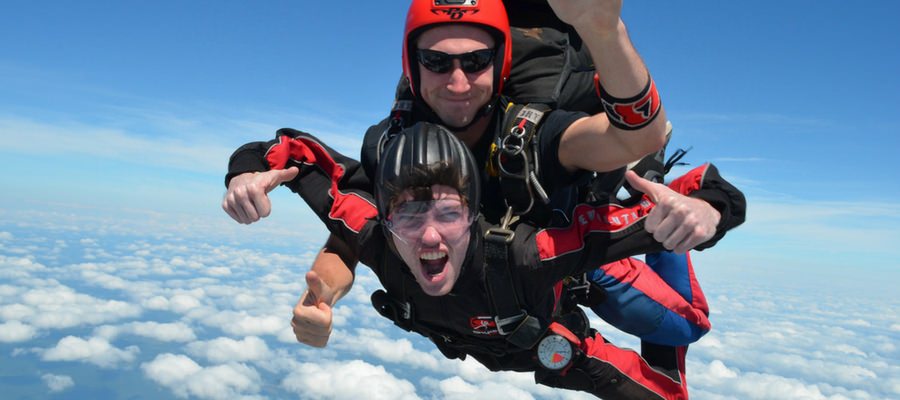Skydiving Facts That May Surprise You
Tuesday, December 20, 2016
Skydiving Facts That May Surprise You
With a sport as unique as skydiving, there are lots of misconceptions about what skydiving is really like. If you haven’t made your first skydive, you may have bought into some of these common myths that surround our sport. Here, we share some amazing facts about skydiving you may not know.
Fact 1: Skydivers Really Can Fly!
No, really! If you’ve ever wondered what it’s like to fly through the air, skydiving is your way to find out!
Using the simple rules of aerodynamics, skydivers are able to move around the sky. They can fly forwards, backward and side to side. They can change their fall rate to fall slower or faster. At the end of group jumps, they do something called ‘tracking’ to create horizontal separation so everyone opens their parachutes in a completely different area of the sky.
Body flight is a skill that takes years to master. Skydivers start their careers learning to ‘flat fly’ or ‘belly fly’ – this means they fall belly to earth. They learn to fall with other people and to fly around to build different shapes in the sky, known as ‘formations’.
Other skydiving disciplines include ‘freeflying’, which basically means flying on any axis other than belly to earth – so in a seated position, standing and head down. Some skydivers wear ‘wingsuits’ to change the way they fly. There are even skydivers who participate in ‘speed’ events where they compete to fall the fastest.
Did you see Luke Aikens jump without a parachute and land in a net 25,000 feet below him? He was able to achieve this because he was able to control the direction in which he fell.

Fact 2: When Your Parachute Opens, You Don’t Go Back Up
A common myth about skydiving is that you go back up when your parachute opens.
This myth comes from people watching skydiving videos and seeing what appears to be an upward movement when the parachute is deployed.
The truth is, what you’re seeing is the camera person continuing to fall at a consistent speed as the person/people they’re filming slow down. This creates the illusion of going up, when actually, they’re just not going down as quickly as they were before.
Fact 3: Skydivers Use A Device Called An ‘Automatic Activation Device’ To Keep Them Safe
Skydiving is a physical sport. Especially when we jump with other people, we’re often moving quickly together and there is always a very small risk of hitting one another. Even if we’re not flying with other people, there is a minor possibility that, through a health reason or otherwise, we could find ourselves unconscious in the air.
Skydivers are not reckless people. We take every precaution to negate the risks as much as possible. That’s why we all jump with two parachutes. We also all jump with something called an ‘automatic activation device’, or ‘AAD’.
This is a small device which sits in the parachute rig. It is continuously monitoring the speed at which we’re falling and the altitude we’re at. This means it can tell if we are in freefall at a height we shouldn’t be.
Should this happen, the AAD fires to cut the cord that holds the reserve parachute in. This then automatically deploys the reserve parachute, ensuring the skydiver has a parachute over their heads in good time and can usually come to land safely.
For more skydiving facts and answers to your top questions, view our Frequently Asked Questions or get in touch with a member of our team. Ready to give skydiving a try? Book a tandem skydive near Charlotte with the experienced team at Skydive Carolina! We can’t wait to show you how amazing skydiving is!
Copyright © 2024, Skydive Carolina, All Rights Reserved.
DropZone Web Design & Marketing by Beyond Marketing, LLC





